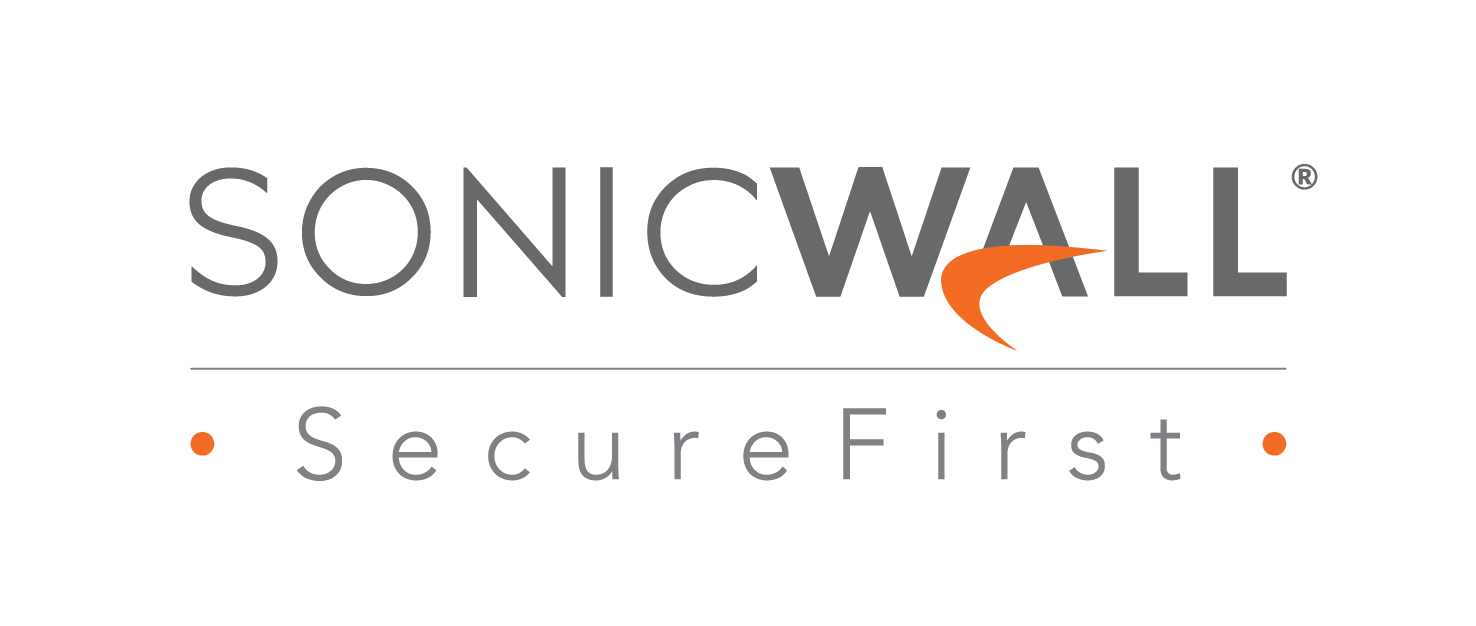Hardware Overview |
| Operating system | SonicOS |
|---|
| Security Processing Cores | 4 |
|---|
| Interfaces | 7x1GbE, 1 USB, 1 Console |
|---|
| Expansion | USB |
|---|
| Single Sign-On (SSO) Users | 500 |
|---|
| VLAN interfaces | 50 |
|---|
| Access points supported (maximum) | 16 |
|---|
Firewall |
| Firewall throughput | 1.3 Gbps |
|---|
| Threat prevention throughput | 600 Mbps |
|---|
| Application inspection throughput | 1.2 Gbps |
|---|
| Anti-malware throughput | 600 Mbps |
|---|
| IPS throughput | 900 Mbps |
|---|
| TLS/SSL inspection and decryption throughput (DPI SSL) | 150 Mbps |
|---|
| Maximum connections (SPI) | 150 000 |
|---|
| Maximum connections (DPI) | 125 000 |
|---|
| Maximum connections (DPI SSL) | 25 000 |
|---|
| New connections/sec | 6000 |
|---|
VPN |
| Site-to-site VPN tunnels | 20 |
|---|
| IPSec VPN clients (maximum) | 2 (25) |
|---|
| SSL VPN licenses (maximum) | 2 (100) |
|---|
| Virtual assist bundled (maximum) | 1 (30-day trial) |
|---|
| Encryption/authentication | DES, 3DES, AES (128, 192, 256-bit), MD5, SHA-1, Suite B Cryptography |
|---|
| Key exchange | Diffie Hellman Groups 1, 2, 5, 14 |
|---|
| Route-based VPN | RIP, OSPF |
|---|
| Certificate support | Verisign, Thawte, Cybertrust, RSA Keon, Entrust and Microsoft CA for SonicWall-to- SonicWall VPN, SCEP |
|---|
| VPN features | Dead Peer Detection, DHCP Over VPN, IPSec NAT Traversal, Redundant VPN Gateway, Route-based VPN |
|---|
| Global VPN client platforms supported | Microsoft® Windows Vista 32/64-bit, Windows 7 32/64-bit, Windows 8.0 32/64-bit, Windows 8.1 32/64-bit, Windows 10 |
|---|
| NetExtender | Microsoft Windows Vista 32/64-bit, Windows 7, Windows 8.0 32/64-bit, Windows 8.1 32/64-bit, Mac OS X 10.4+, Linux FC3+/Ubuntu 7+/OpenSUSE |
|---|
| Mobile Connect | Apple® iOS, Mac OS X, Google® Android™, Kindle Fire, Chrome, Windows 8.1 (Embedded) |
|---|
Security Services |
| Deep Packet Inspection services | Gateway Anti-Virus, Anti-Spyware, Intrusion Prevention, DPI SS |
|---|
| Content Filtering Service (CFS) | HTTP URL, HTTPS IP, keyword and content scanning, Comprehensive filtering based on file types such as ActiveX, Java, Cookies for privacy, allow/forbid lists |
|---|
| Enforced Client Anti-Virus and Anti-Spyware | McAfee® |
|---|
| Comprehensive Anti-Spam Service | Supported |
|---|
| Application Visualization | Yes |
|---|
| Application Control | Yes |
|---|
| Capture Advanced Threat Protection | Yes |
|---|
Networking |
| IP address assignment | Static, (DHCP, PPPoE, L2TP and PPTP client), Internal DHCP server, DHCP relay |
|---|
| NAT modes | 1:1, 1:many, many:1, many:many, flexible NAT (overlapping IPs), PAT, transparent mode |
|---|
| Routing protocols | BGP4, OSPF, RIPv1/v2, static routes, policy-based routing |
|---|
| QoS | Bandwidth priority, max bandwidth, guaranteed bandwidth, DSCP marking, 802.1e (WMM) |
|---|
| Authentication | LDAP (multiple domains), XAUTH/ RADIUS, SSO, Novell, internal user database, Terminal Services, Citrix |
|---|
| Local user database | 150 |
|---|
| VoIP | Yes |
|---|
| Standards | TCP/IP, UDP, ICMP, HTTP, HTTPS, IPSec, ISAKMP/IKE, SNMP, DHCP, PPPoE, L2TP, PPTP, RADIUS, IEEE 802.3 |
|---|
| Certifications | FIPS 140-2 (with Suite B) Level 2, UC APL, VPNC, IPv6 (Phase 2), ICSA Network Firewall, ICSA Anti-virus |
|---|
| Certifications pending | Common Criteria NDPP |
|---|
| Common Access Card (CAC) | Supported |
|---|
| High availability | Active/standby |
|---|
Hardware |
| Form factor | Desktop |
|---|
| Power supply (W) | 24W external |
|---|
| Maximum power consumption (W) | 9.2 / 13.8 |
|---|
| Input power | 100 to 240 VAC, 50-60 Hz, 1 A |
|---|
| Total heat dissipation | 31.3 / 47.1 BTU |
|---|
| Dimensions | 3.5x13.4x19cm |
|---|
| Weight | 0.73 kg / 1.61 lbs 0.84 kg / 1.85 lbs |
|---|
| WEEE weight | 1.15 kg / 2.53 lbs 1.26 kg / 2.78 lbs |
|---|
| Shipping weight | 1.37 kg / 3.02 lbs 1.48 kg / 3.26 lbs |
|---|
| MTBF (years) | 54 |
|---|
| Environment (Operating/Storage) | 32°-105° F (0°-40° C)/-40° to 158° F (-40° to 70° C) |
|---|
| Humidity | 5-95% non-condensing |
|---|
Regulatory |
| Regulatory model (wired) | FCC Class B, ICES Class B, CE (EMC, LVD, RoHS), C-Tick, VCCI Class B, UL, cUL, TUV/ GS, CB, Mexico CoC by UL, WEEE, REACH, KCC/MSIP |
|---|
| Major regulatory compliance (wireless) | FCC Class B, FCC RF ICES Class B, IC RF CE (R&TTE, EMC, LVD, RoHS), RCM, VCCI Class B, MIC/TELEC, UL, cUL, TUV/GS, CB, Mexico CoC by UL, WEEE, REACH |
|---|
Integrated Wireless (TZ400W) |
| Standards | 802.11a/b/g/n/ac (WEP, WPA, WPA2, 802.11i, TKIP, PSK,02.1x, EAP-PEAP, EAP-TTLS |
|---|
| Frequency bands | 802.11a: 5.180-5.825 GHz; 802.11b/g: 2.412-2.472 GHz; 802.11n: 2.412-2.472 GHz, 5.180-5.825 GHz; 802.11ac: 2.4122.472 GHz, 5.180-5.825 GHz |
|---|
| Operating Channels | 802.11a: US and Canada 12, Europe 11, Japan 4, Singapore 4, Taiwan 4; 802.11b/g: US and Canada 1-11, Europe 1-13, Japan 1-14 (14-802.11b only); 802.11n (2.4 GHz): US and Canada 1-11, Europe 1-13, Japan 1-13; 802.11n (5 GHz): US and Canada 36-48/149-165, Europe 36-48, Japan 36-48, Spain 36-48/52-64; 802.11ac: US and Canada 36-48/149-165, Europe 36-48, Japan 36-48, Spain 36-48/52-64 |
|---|
| Transmit output power | Based on the regulatory domain specified by the system administrator |
|---|
| Transmit power control | Supported |
|---|
| Data rates supported | 802.11n: 7.2, 14.4, 21.7, 28.9, 43.3, 57.8, 65, 72.2, 15,30, 45, 60, 90, 120, 135, 150 Mbps per channel; 802.11a: 6, 9, 12, 18, 24, 36, 48, 54 Mbps per channel; 802.11b: 1, 2, 5.5, 11 Mbps per channel; 802.11g: 6, 9, 12, 18, 24, 36, 48, 54 Mbps per channel; 802.11n: 7.2, 14.4, 21.7, 28.9, 43.3, 57.8, 65, 72.2, 15,30, 45, 60, 90, 120, 135, 150 Mbps per channel; 802.11ac: 7.2, 14.4, 21.7, 28.9, 43.3, 57.8, 65, 72.2, 86.7, 96.3, 15, 30, 45, 60, 90, 120, 135, 150, 180, 200, 32.5, 65, 97.5, 130, 195, 260, 292.5, 325, 390, 433.3, 65, 130, 195, 260, 390, 520, 585, 650, 780, 866.7 Mbps per channel |
|---|
| Modulation technology spectrum | 802.11a: Orthogonal Frequency Division Multiplexing (OFDM); 802.11b: Direct Sequence Spread Spectrum (DSSS); 802.11g: Orthogonal Frequency Division Multiplexing (OFDM)/Direct Sequence Spread Spectrum (DSSS); 802.11n: Orthogonal Frequency Division Multiplexing (OFDM); 802.11ac: Orthogonal Frequency Division Multiplexing (OFDM) |
|---|




